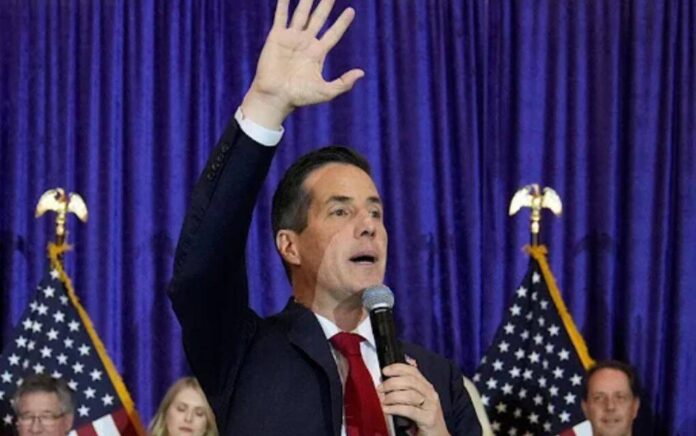
Tuesday was a big day for the GOP. They got the wins they needed.
And the Democrats turned white as a ghost when these election results came in.
Republicans claimed a significant victory on Tuesday night, ousting three-term Senator Sherrod Brown (D-OH) and securing control of the Senate for the first time in nearly four years.
More than $400 million was funneled into the Ohio race, marking it as the most expensive Senate contest in U.S. history. With Democrats clinging to a slim one-seat majority in the Senate, the Ohio outcome held the potential to reshape the balance of power in Washington.
Brown, the last Democratic stronghold in Ohio’s statewide offices, was considered one of the few incumbents in a tightly contested race. Rated as a toss-up, his reelection bid represented a critical chance for Democrats to retain their Senate advantage.
Despite his efforts, however, Brown could not muster enough support from Republicans to overcome Bernie Moreno, a businessman and the GOP nominee aligned closely with former President Donald Trump.
As the final votes were coming in, Moreno led by 5 percentage points, clinching a 51% to 46% lead over Brown. The Associated Press called the race shortly after 11 p.m. ET.
In his victory speech, Moreno celebrated what he called a “new dawn of Republican leadership,” pledging his commitment to Trump’s “America First” agenda as Republicans anticipate their strengthened position in the Senate.
Moreno took a swipe at Senate Majority Leader Chuck Schumer (D-NY), alluding to the millions that Democrats reportedly poured into the GOP primary to elevate his campaign, viewing him as a potentially weaker general election contender due to his strong pro-Trump stance.
“Chuck Schumer, if you’re watching — thanks for the help in the primary, but you’re fired, buddy,” Moreno said to his supporters on election night.
Brown had previously weathered three successful statewide races in Ohio, maintaining his seat despite the state’s shift to the right. He secured reelection by 5 points in 2012 and 7 points in 2018.
His populist platform, with a focus on the “dignity of work” and a critical view of global trade, struck a chord with many Ohio voters over the years. But this message failed to resonate in a climate where Trump’s influence boosted Moreno and down-ballot Republicans.
Trump held a commanding 12-point lead over Vice President Kamala Harris in Ohio as the vote count neared completion, with 90% of ballots counted.
In the lead-up to Election Day, Brown reportedly shared with donors his belief that he could defy the odds if Harris managed to keep Trump’s lead to within 8 points. Brown’s strategy hinged on winning over voters more loyal to Trump than to Moreno, yet the anticipated crossover failed to materialize.
While Brown has historically performed well in Ohio’s Mahoning Valley and other blue-collar areas, his longtime support couldn’t carry him through this cycle. After three decades representing Ohio in Congress—first in the House and then the Senate—Brown’s term will conclude in January.
During his concession speech, Brown expressed disappointment but avoided labeling his campaign as a failure. He told supporters this is a “disappointment but not a failure,” and vowed that he is “never giving up.”
“In the light of day, I know most of you are never giving up either,” he added.
Moreno, a former luxury car dealer and blockchain entrepreneur, will join a Republican-controlled Senate when he is sworn in next year. Republicans had already flipped West Virginia early in the evening and will hold at least 51 seats in the next Congress.
The outcome in Ohio also reflects a contentious campaign season. Moreno faced accusations linked to past wage theft lawsuits involving his car dealership, and Brown’s allies spotlighted a remark from Moreno suggesting that women over 50 need not worry about abortion access. This line of attack underscored a Democratic strategy banking on the enduring significance of abortion rights two years after the Supreme Court’s decision to overturn Roe v. Wade.
Meanwhile, Republicans shifted the campaign narrative toward issues like the economy, immigration, and transgender policy. GOP super PACs spent heavily on ads warning that Democrats would allow “biological males” in female sports, a message that prompted Brown to counter with an ad calling the claim false.
Initially, Brown held a steady polling lead over Moreno in the general election, outperforming both President Joe Biden and Vice President Harris in Ohio. However, that lead dissolved in the final weeks of the campaign as both parties poured hundreds of millions into a fierce advertising blitz after Labor Day. By Election Day, the race was a statistical dead heat.
Stay tuned to The Federalist Wire.



















